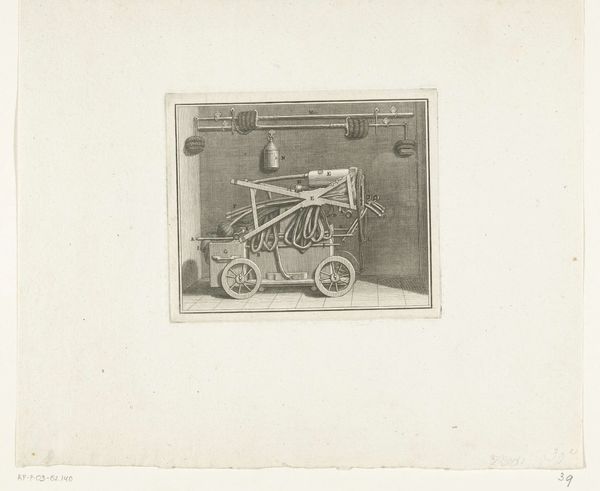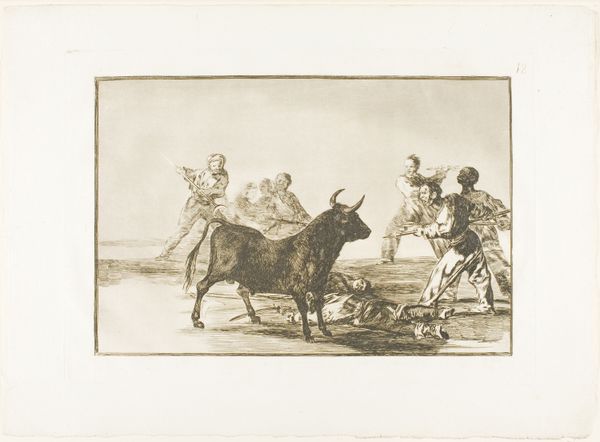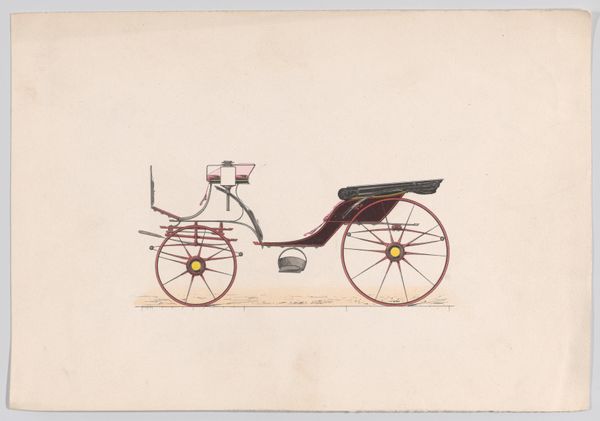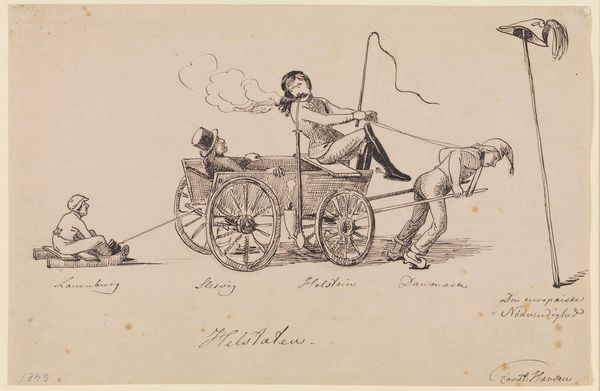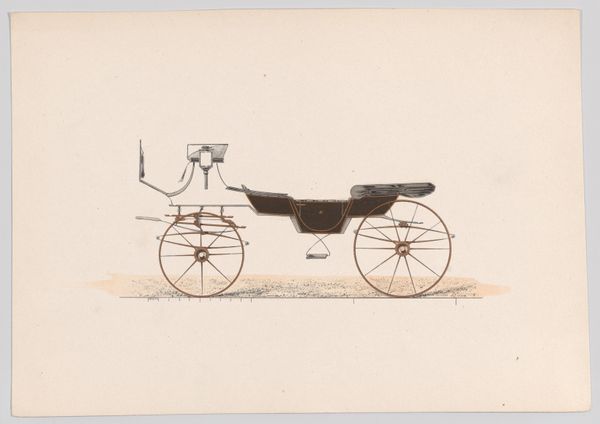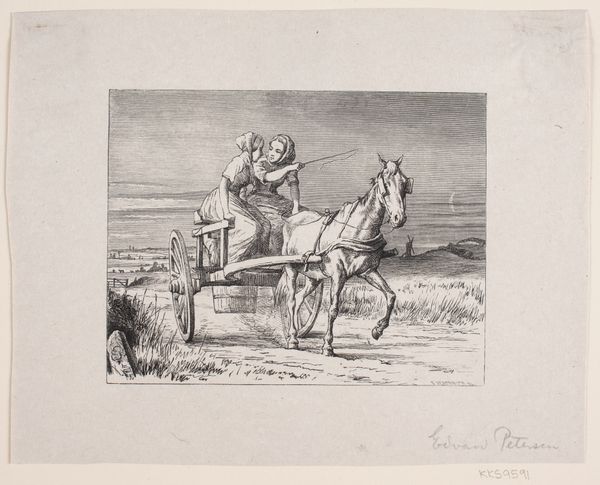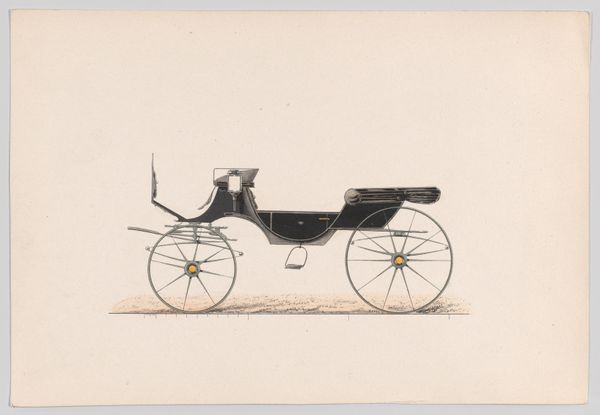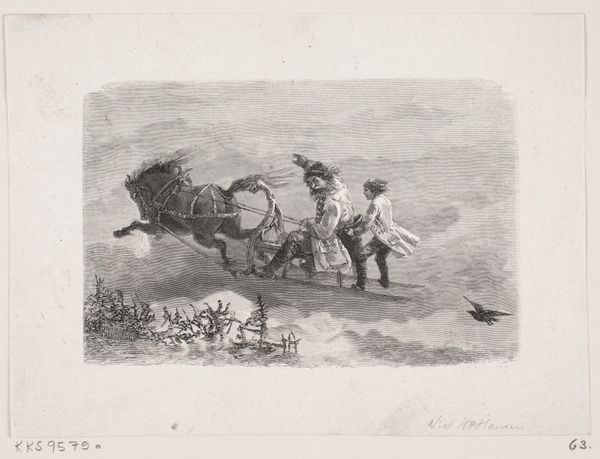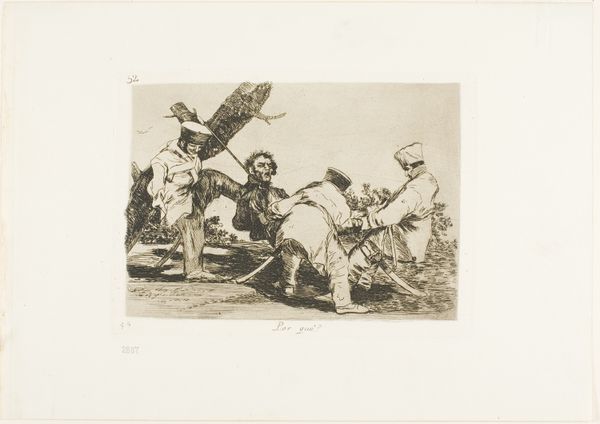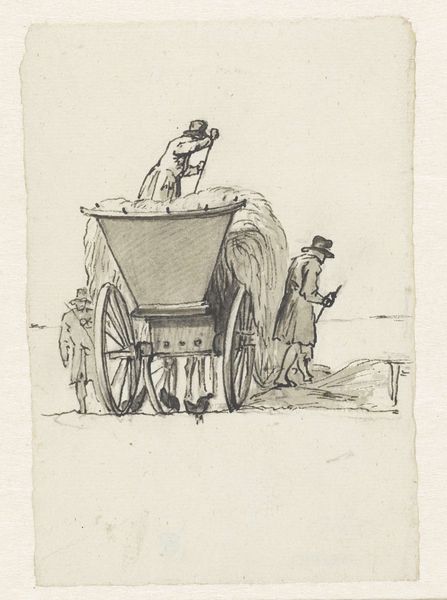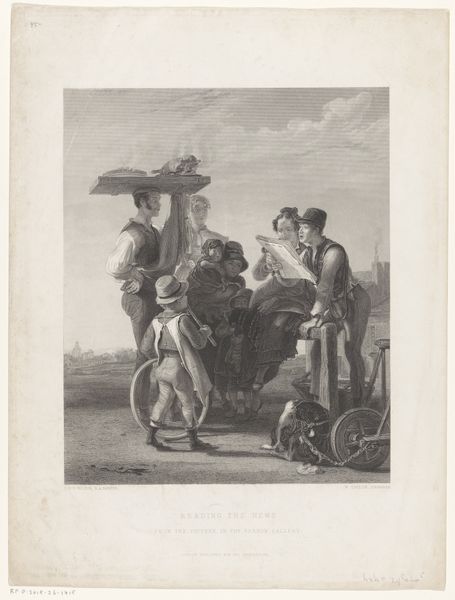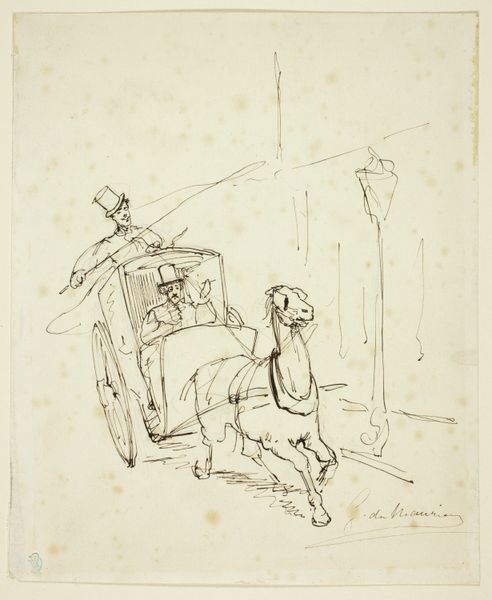
Amor, Tod und Jenseits, from the series Intermezzi 1870 - 1920
0:00
0:00
Dimensions: Sheet: 7 7/8 × 17 1/16 in. (20 × 43.4 cm)
Copyright: Public Domain
Curator: Max Klinger's etching, "Amor, Tod und Jenseits," from his series *Intermezzi*, circa 1870-1920, now hangs before us. It's quite the allegorical scene, wouldn't you agree? Editor: Intriguing, yes. My initial reaction is drawn to the tonal contrasts, the dark, linear quality juxtaposed against expanses of untouched paper. There’s a tangible tension, an almost unsettling balance created by these opposing visual weights. Curator: Unsettling is a perfect word. Consider the cultural significance here. We have Amor, or Cupid, paired with the skeletal figure of Death himself, riding a chariot pulled by a fearsome representation of the Plague. This embodies the Mannerist and Symbolist styles prevalent at the time, delving into deeper truths through symbolic form. Editor: Agreed, the symbolism is dense, though structurally, note how Klinger’s masterful command of etching produces varying textures that articulate each element. The hatching on Death, versus the softer modeling of Cupid's body creates visual separation while conceptually linking them. Curator: Precisely! Think of what Cupid symbolizes – love, desire, passion, new life—while Death, obviously, is its antithesis, representing the inevitable end. The Plague underscores the fragility of human existence. Klinger compels us to face the interconnectedness of these primal forces, love being in constant communion with suffering. Editor: Yes, the composition underscores that inherent tension, but technically, observe the dynamism inherent in the work: the flowing lines suggesting the swift progression of the chariot set against the serene and rather mathematically rendered landscape in the background, the stark verticals of those stylized cypress trees. There is an implied story being told using visual and compositional tools. Curator: And isn’t that visual storytelling inherently connected to the symbols he uses? The cupid, commonly depicted as youthful innocence, now drives this macabre procession, reflecting the dark undercurrents of desire and existence that were prevalent within Klinger’s lifetime and society. These icons don't exist in isolation. They resonate with generations, mirroring fears and anxieties that still remain relevant today. Editor: True enough. But in my interpretation, the aesthetic, through the meticulous orchestration of form and space, enhances the underlying meaning and elevates Klinger's etching above mere illustration into a significant work of art. The content simply serves to reveal the skill behind the craft. Curator: Ultimately, Klinger's complex artwork acts as a looking glass—one reflecting ourselves through the ever-pertinent, historical, and shared lenses of love, death, and what may lie beyond. Editor: Quite a memorable arrangement. I appreciate the balance of raw expression contained and carefully articulated using highly advanced printing methods.
Comments
No comments
Be the first to comment and join the conversation on the ultimate creative platform.
